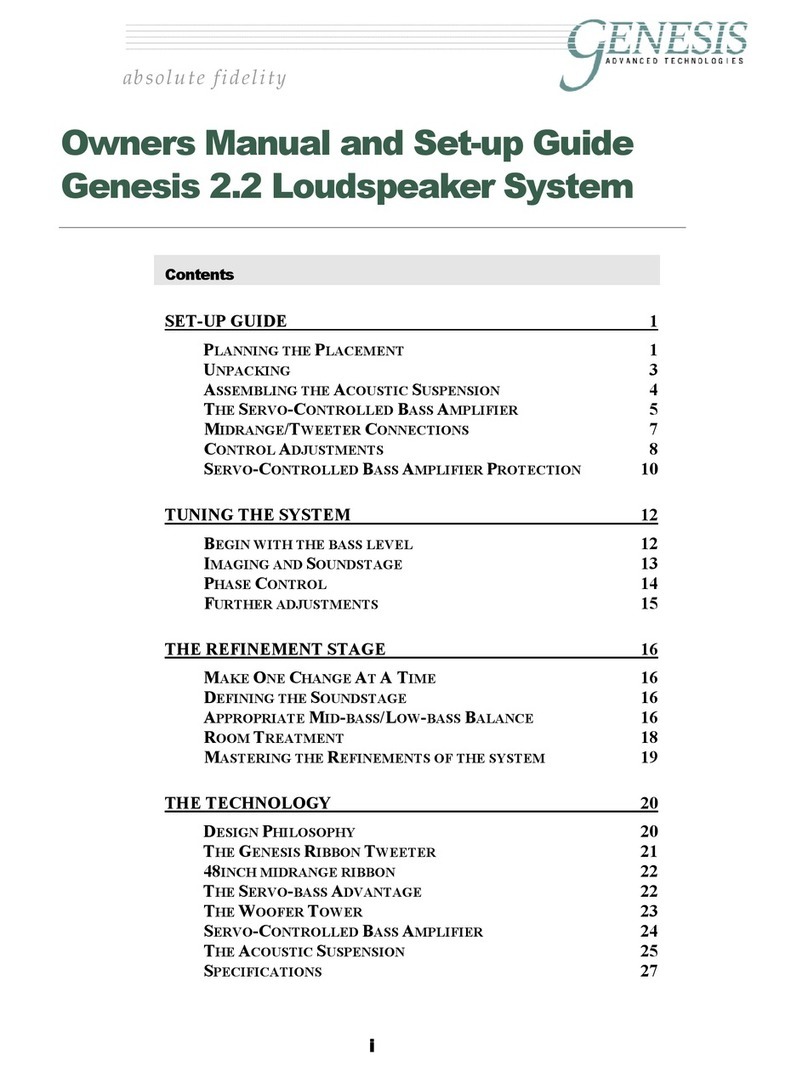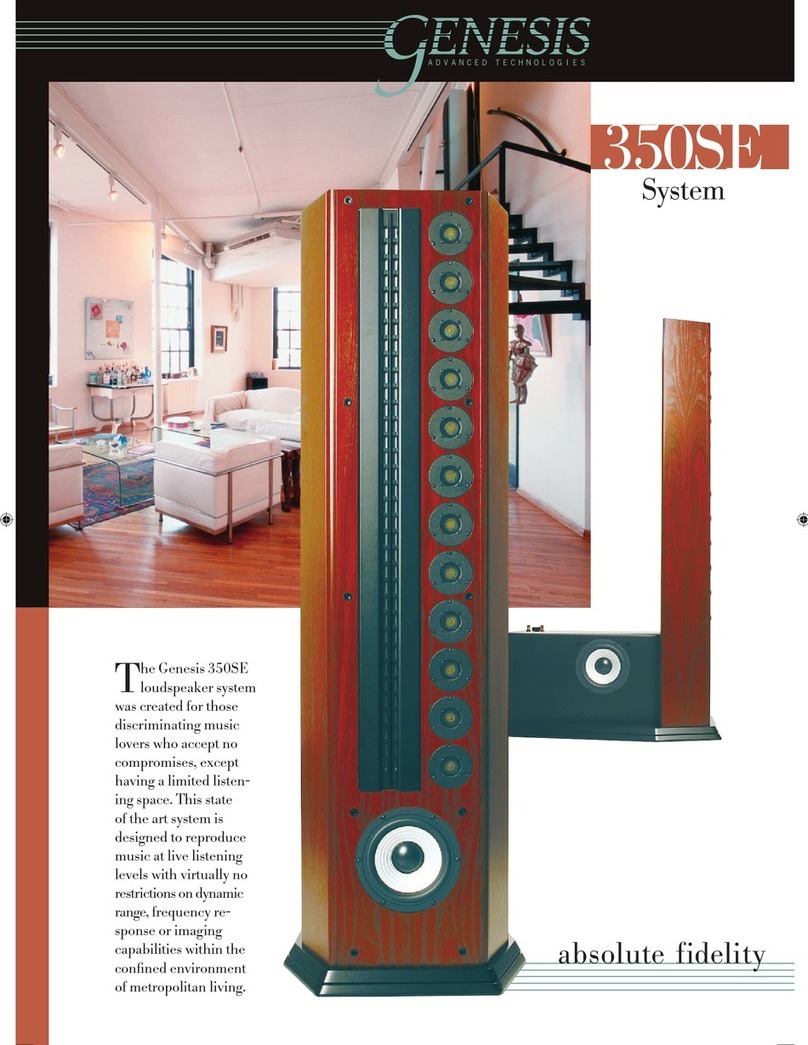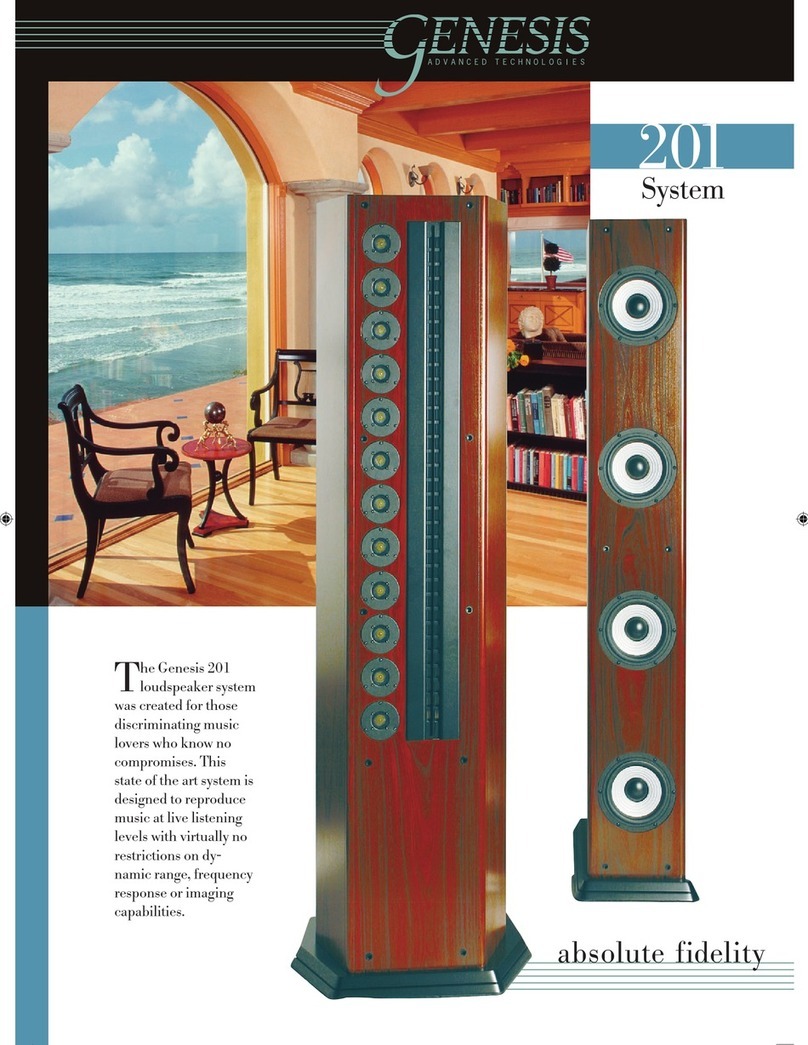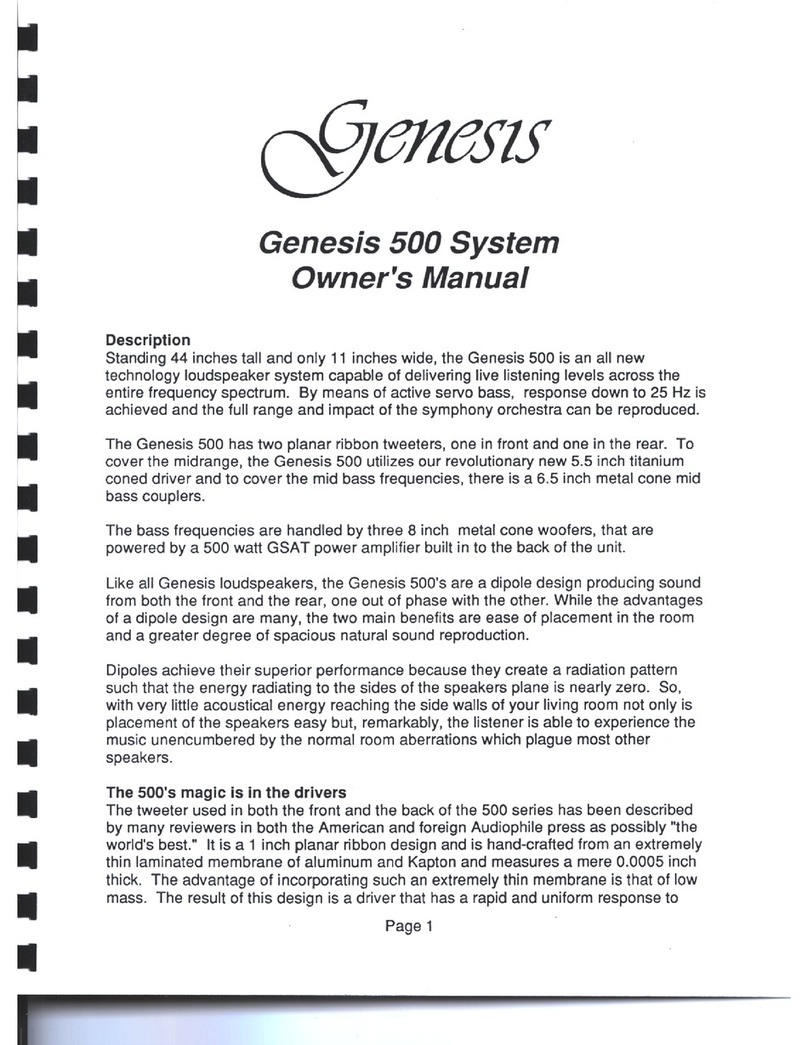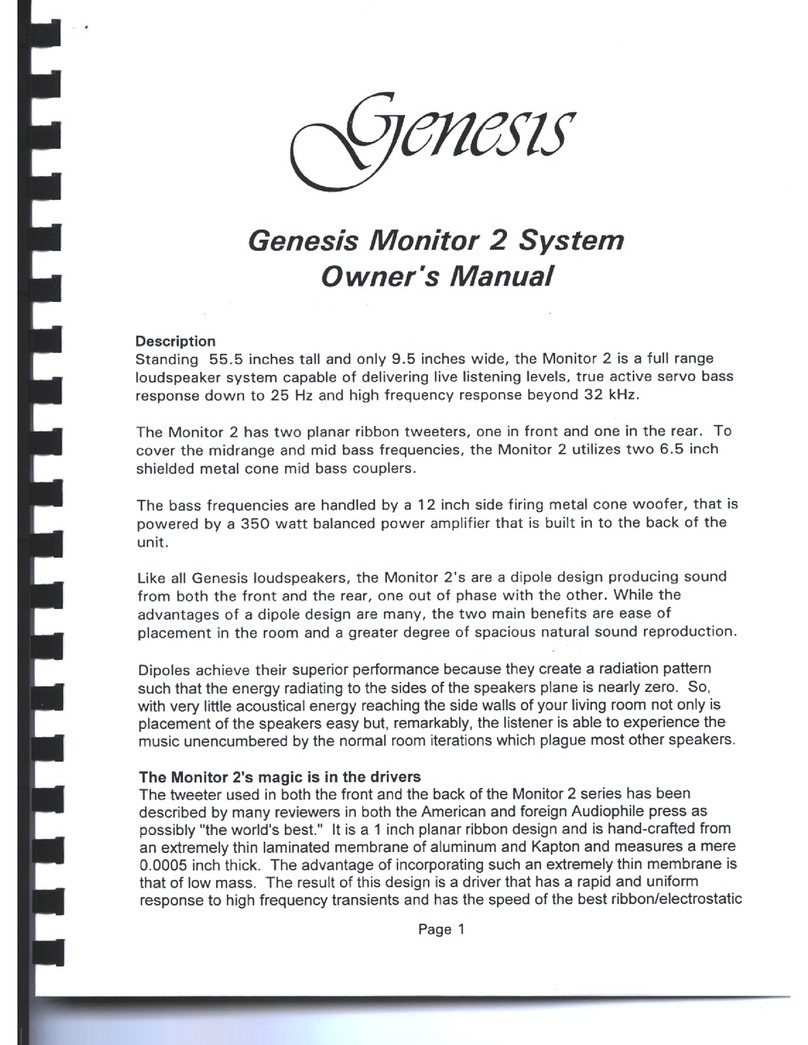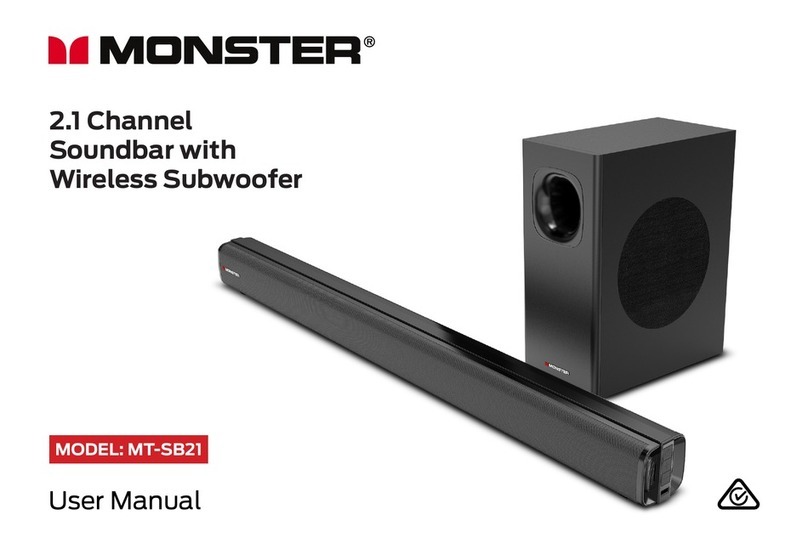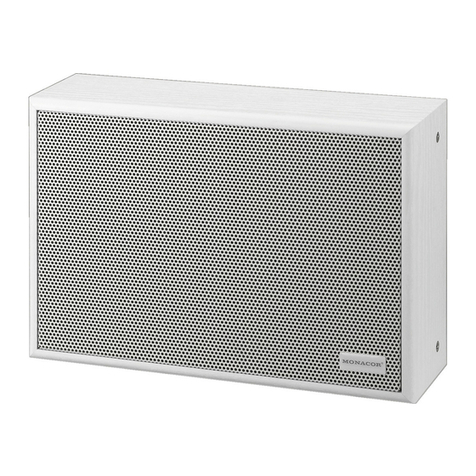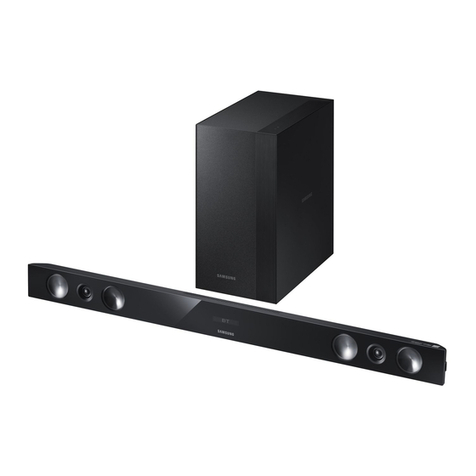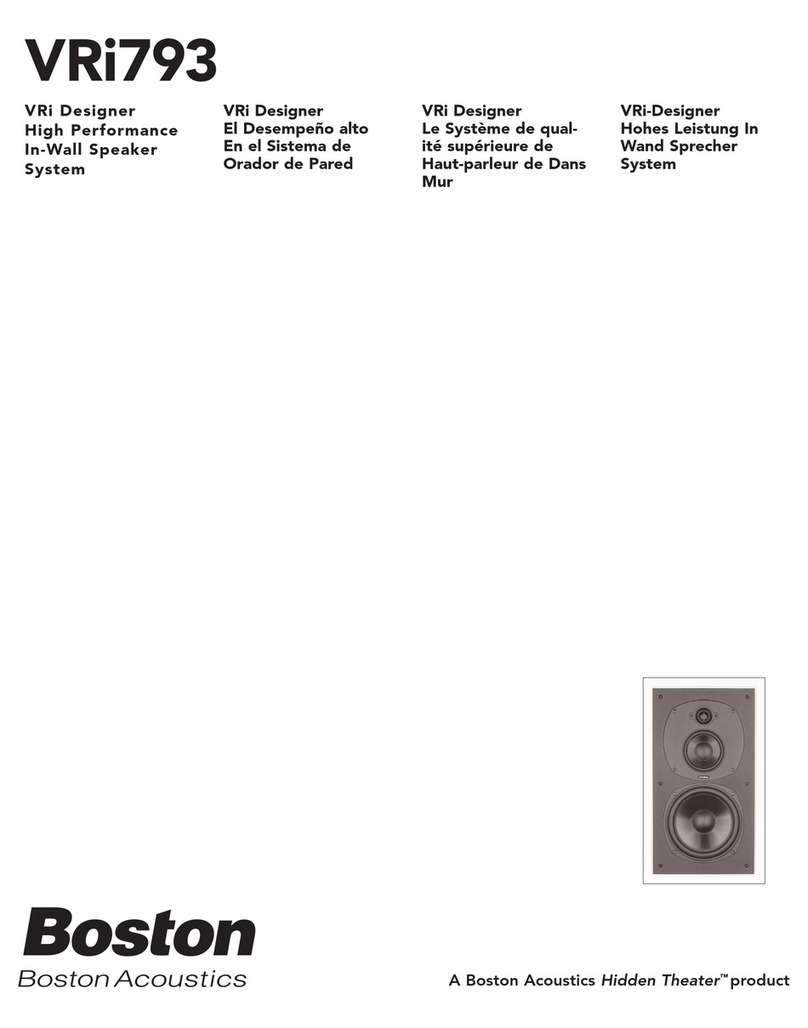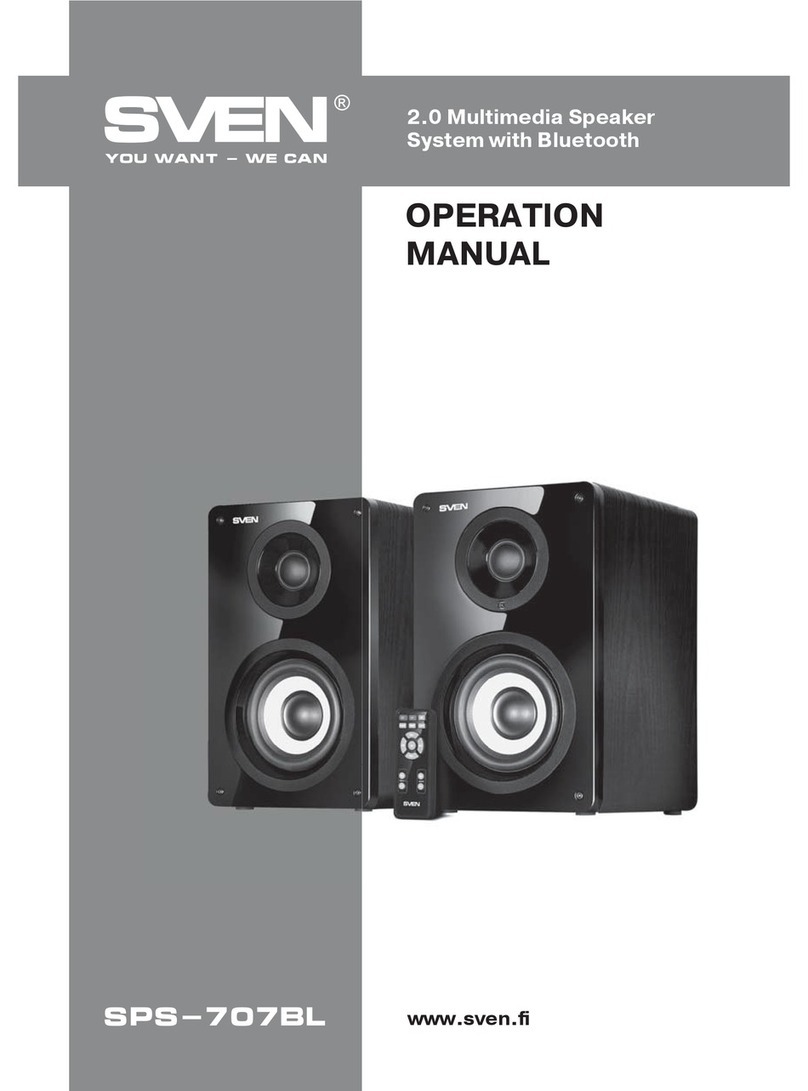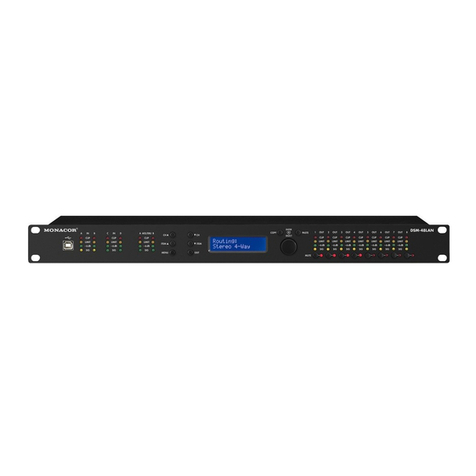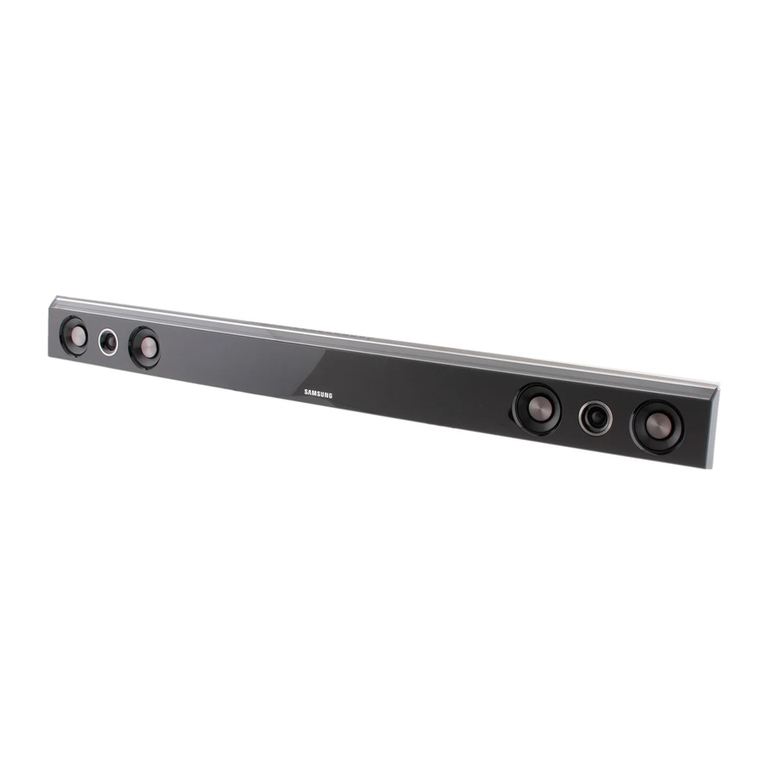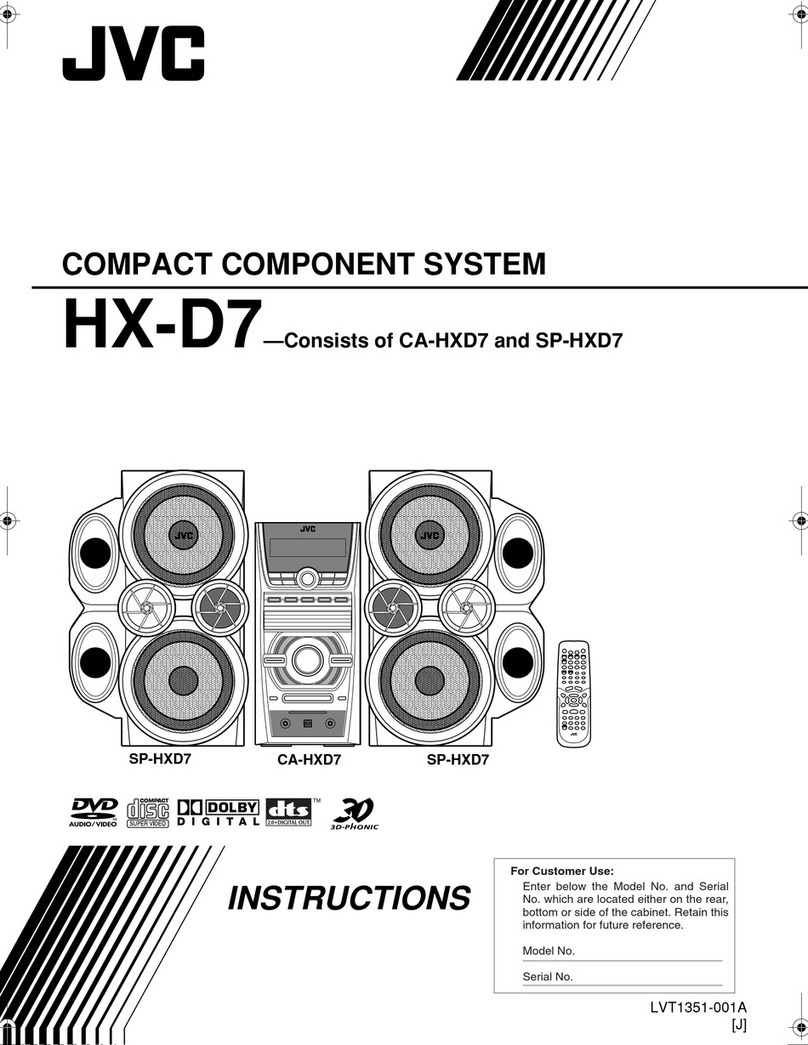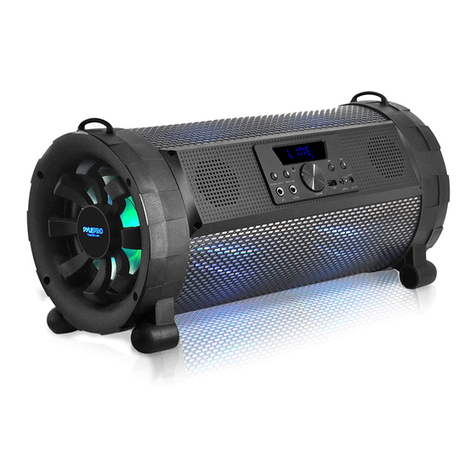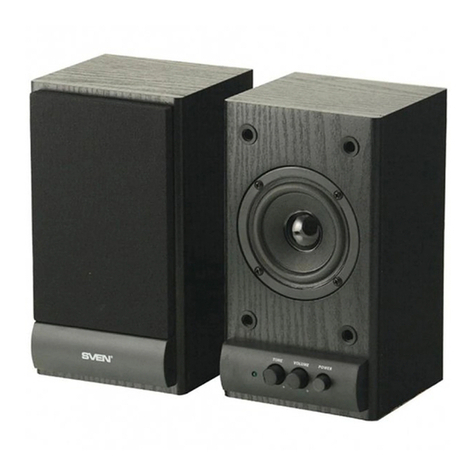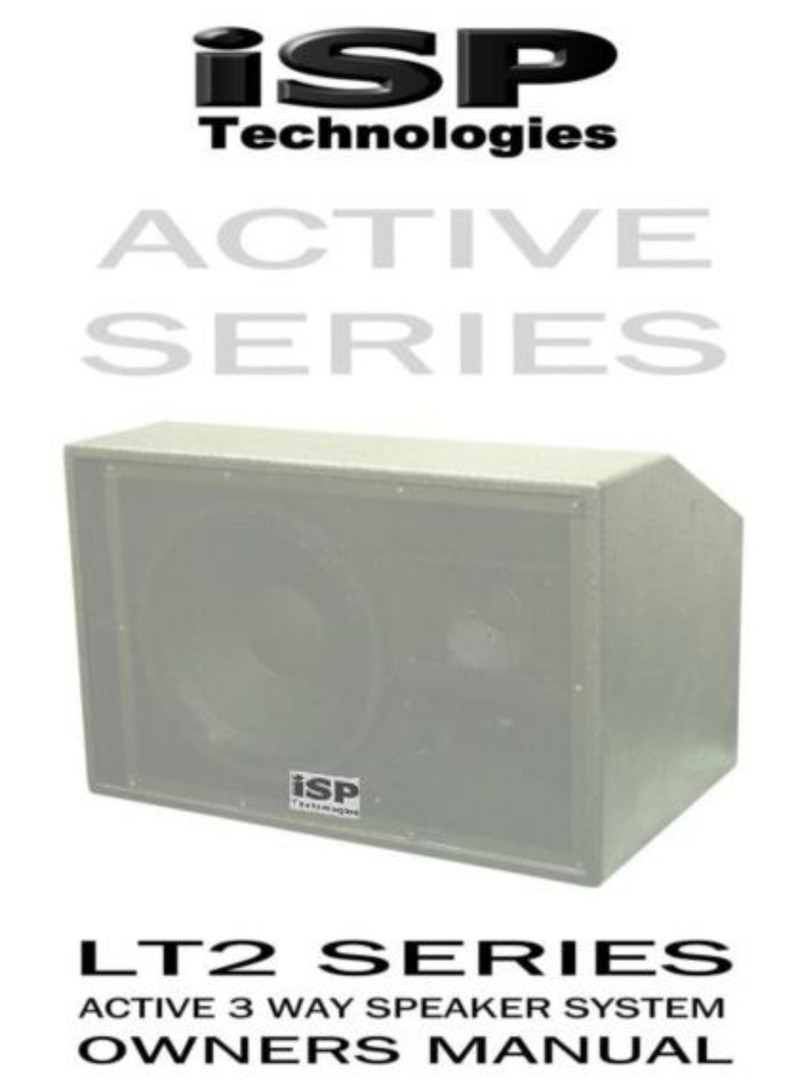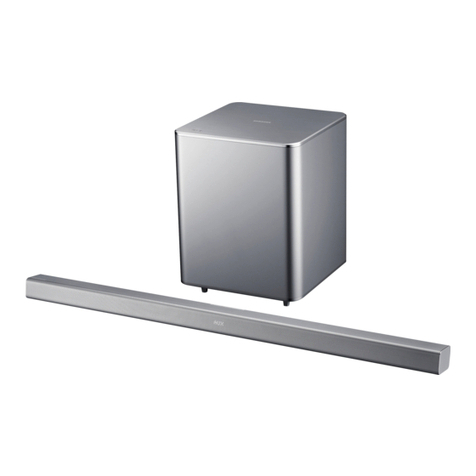
7
Note: One ru e of thumb you shou d a ways keep in mind. Make one change at a
time! Do not, for instance, change position of the speakers and make an adjustment
to the amp ifier a at once. Make each of these changes separate y and note the
difference –by istening- with each adjustment. One of the biggest mistakes we find
customers making is too many changes at once. Make one change, then listen.
1. A common problem we find with many setups is a tendency to separate the
speakers too far apart from each other. This gives an unnaturally wide
soundstage between the two speakers, and creates problems beyond the
unnatural width of the center stage. The key problem is a lack of soundstage
information beyond the left and right sides of the speakers. Another is
improper focus of instruments and voices which is typically “corrected” by
the user with too much toe in. Yet another problem is a lack of mid bass
energy. In order for the appropriate amount of mid bass energy to be present,
the speakers should be close enough together to achieve proper “coupling” of
the titanium midrange driver. oupling is desirable in the lower frequencies
and simply means that the left and right drivers “work together” as opposed to
working separately.
In order to achieve what the speaker is capable of we suggest you focus your efforts on a
proper balance of soundstage elements that includes information beyond the left and right
sides of the speakers, front to back depth well behind the speaker, excellent focus of
instrument and voices with proper vertical information and mid bass fill.
A Genesis loudspeaker system correctly set up, can and should provide a soundstage that
is wall to wall and with pin point focus, the speakers disappearing completely on a
recording containing such information.
2. If you find that the sound is not spacious enough or you are not getting
enough front to back depth, pull the speaker away from the wall (towards the
listening position). This is typically preferable to separating the two speakers
too far and will almost give you better depth and soundstage information. A
word of caution, if you move the speakers too far from the wall behind the
speakers you may lose focus.
3. If you find there isn’t enough deep bass, your first remedy is the volume
control on the woofer amplifier. This has several limitations. First, turned up
too high, you may get some distortion on very low frequencies. Secondly, you
may make the mid bass produced by the top of the woofer out of proportion
with the mid bass produced by the bottom of the midrange driver. This would
tend to sound “boomy” in the mid bass regions.
A good rule of thumb is to first set the volume control of the subwoofer for proper mid
bass rather than low bass. The theory is, if the mid bass is correct then the low bass
should be very close to correct. If the mid bass is proper and the low bass is still not right,
here are some other suggestions. Push the speakers back towards the rear wall. This will


